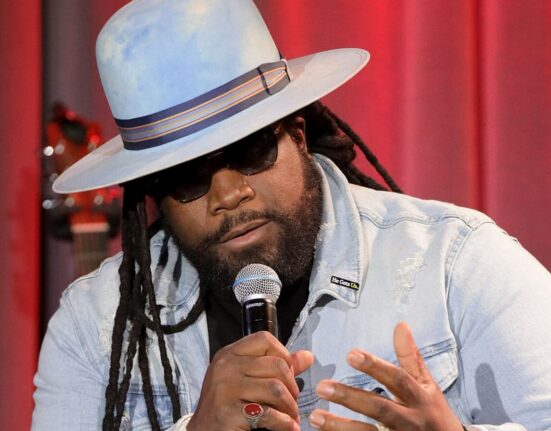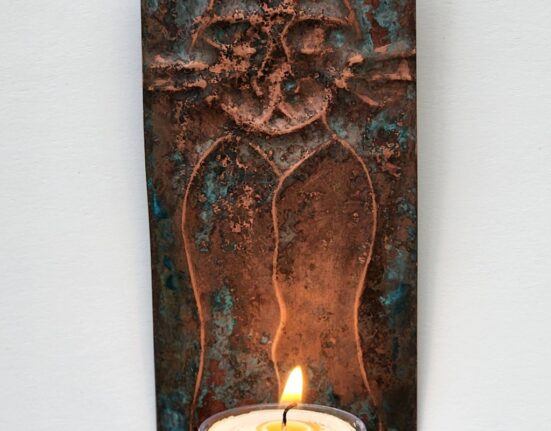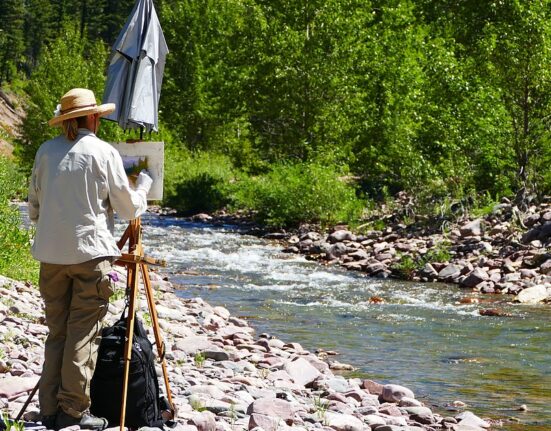
One of the most inspiring parts of living and working in Buffalo is continuously learning about its robust African-American history. Buffalo was once a refuge for formerly enslaved African Americans searching for freedom. This prompted a migration of folks who would go on to establish churches, restaurants, businesses, cultural institutions, and myriad other places that made the East Side a bustling, predominantly Black neighborhood. The realities of urban decay severely and disproportionately affected these areas and the sustainability of Black spaces over time. Recording these stories through art and culture ensures that they are commemorated, built upon, and remembered for generations to come.
Organizations like the Langston Hughes Center, African American Cultural Center, Colored Musicians Club, Black Dance Workshop, and Ujima Company, among so many others, set a blueprint for art as a community practice. Contemporary artists continue to honor these pasts through their work and cultivating new ways to connect with communities. No one exemplifies this more than Edreys and Alexa Joan Wajed, founders of Eat Off Art. A husband-and-wife team, the Wajeds promote engagement and accessibility through arts-related initiatives and services. As multidisciplinary artists, they embody art as an agent of change.

Edreys is an accomplished multidisciplinary artist whose practice spans visual art, music, public art, and jewelry design. Alexa is a highly regarded chef, jewelry designer, and entrepreneur. Their respective practices epitomize creativity as a continuous flow across mediums, citing the importance of Black-led creative spaces in developing their artistic identities and seeing themselves in art. Their business ethos is similar to that of the Langston Hughes Center — that art can be an approachable avenue of freedom and a viable professional career.
Part of a lineage of craftsmen, artists, and thinkers, the Wajeds are building a multigenerational legacy by nurturing the artistic spirits of their two sons. They are also generating opportunities for residents to experiment with their own creativity. Most recently, they’ve launched free programs in their studio. The New Masters: Healing Buffalo Through the Arts is a series of collaborative workshops led by local artists that empower participants to explore self-expression as a healing practice, particularly for Black communities affected by the May 14 Tops tragedy.
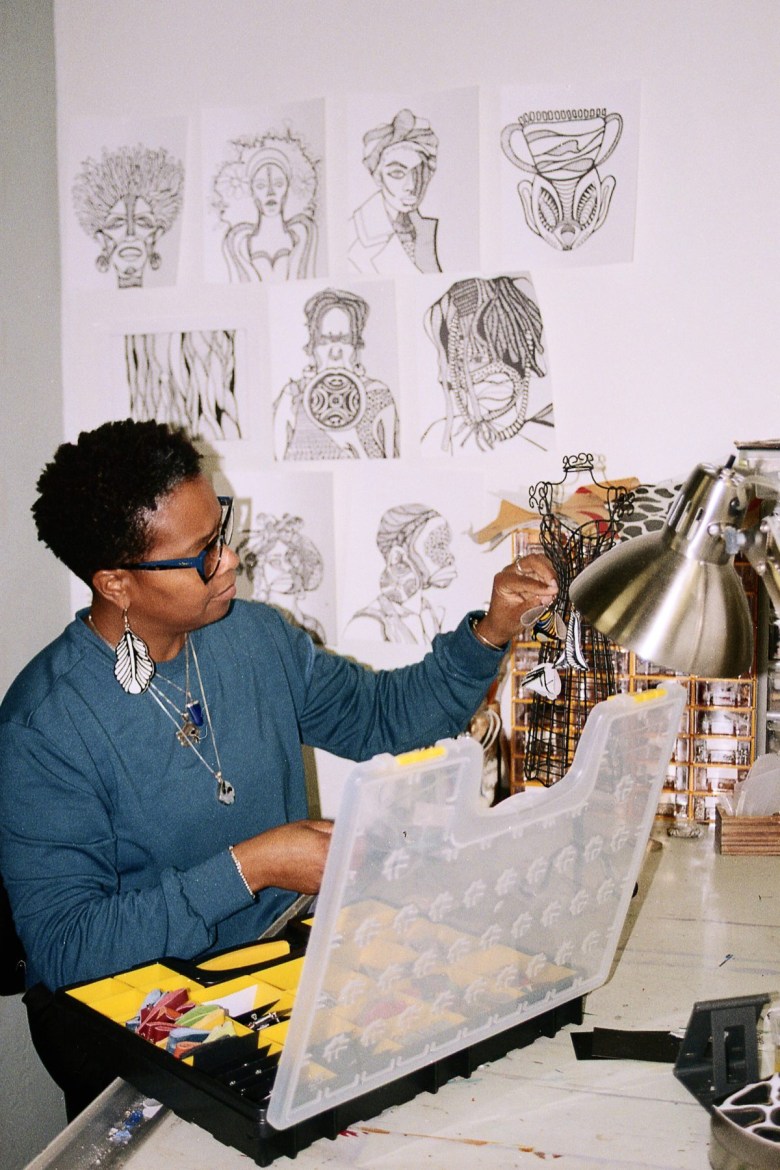
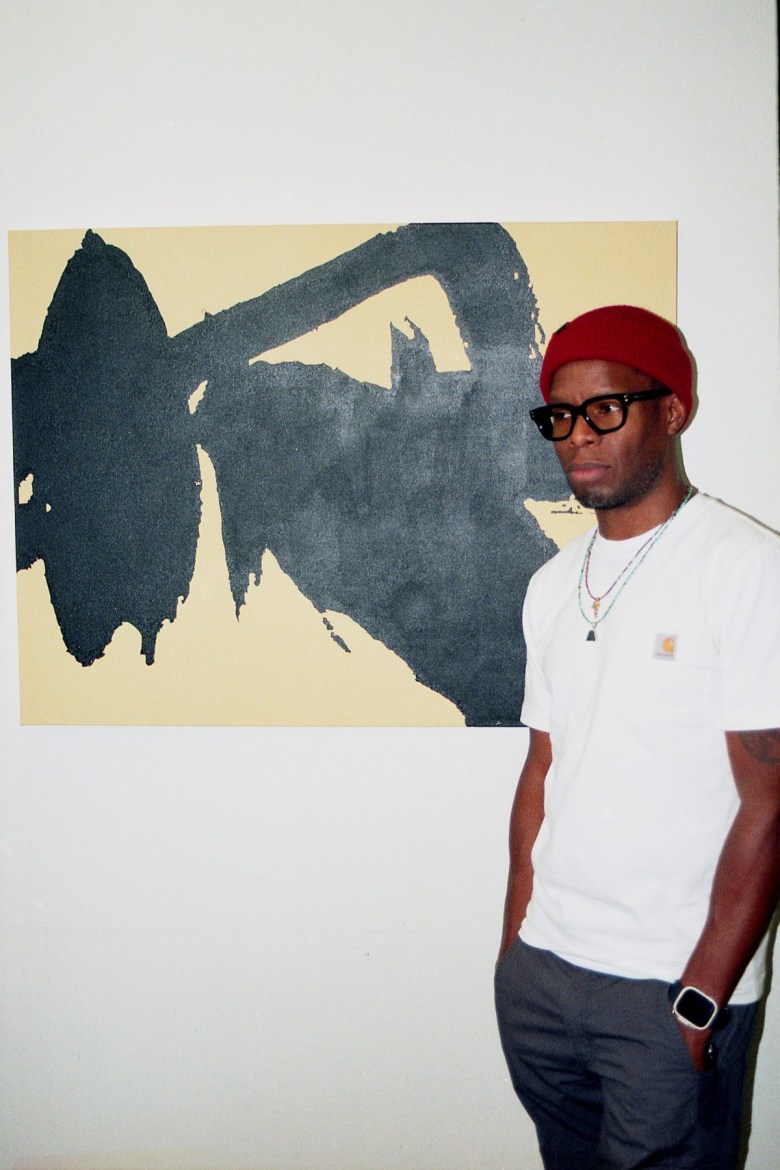
Between workshops, public art projects, consulting, public speaking, and more, Edreys and Alexa have left an indelible mark on the city; their impact on the local artistic landscape cannot be overstated.
“Our mission [with Eat Off Art] is to change the narrative from a starving artist to a thriving artist, and being able to encourage and inspire by example of what we’re doing, but also as parents,” Alexa reflected in conversation. “Our legacy is no doubt going to live on through [our children].”
“To be in this position now with Alexa and I being inspirations to other people and laying the bricks, laying the scaffolding that will allow our children, other people’s children, and even other adults to see an example … that’s an incredible position to be in,” Edreys told me. “And we didn’t set out for that. Our personal North Star was being true to ourselves, that’s the biggest piece of it.”
Much of Edreys’s art is intertwined with his love of music. Works like “Steve Biko (Stir It Up)” bring some of his favorite songs to life, illustrating their sound, rhythm, and instrumentation through a lexicon of symbols and marks. His distinct linear style can also be seen in public art around the city, most notably the Freedom Wall. The 2017 project, commissioned by the Buffalo AKG Art Museum’s Public Art Initiative, contains portraits by artists Julia Bottoms, John Baker, Chuck Tingley, and Wajed to honor several local and national African-American leaders. It is iconic in the city’s creative landscape, finding inspiration in Black history and fostering dialogue around the collective struggle for social justice.
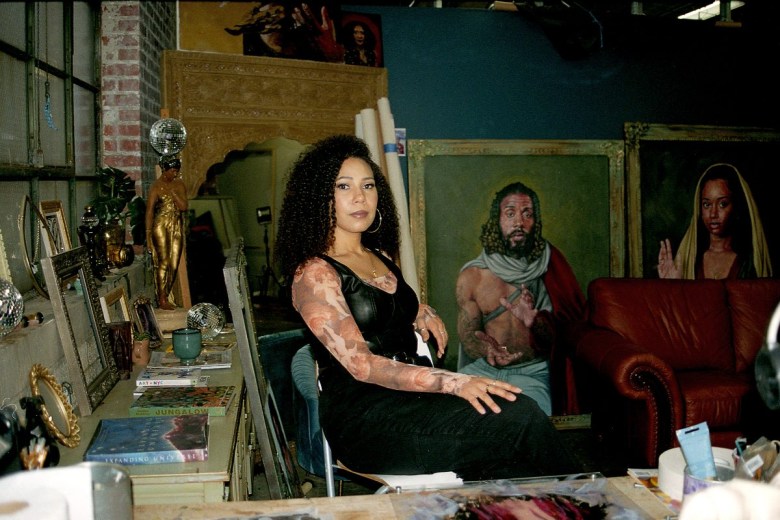
Working primarily in portraiture, Julia Bottoms brings under-recognized narratives into the contemporary space. I recently worked with her on a solo exhibition at the Burchfield Penney Art Center, A Light Under the Bushel. Her strikingly personal portraits have long addressed themes of identity, bringing nuance to depictions of Blackness. Her latest work builds on this practice to consider whose stories are remembered and preserved.
Influenced by Renaissance- and Victorian-era portraits, her paintings emphasize how people of color have always played important roles in history but have often been excluded from portraiture as a genre. The models’ dress and poses reference religious iconography, emulating canonical depictions of saints and other angelic beings to fuse the past with the present and convey the spiritual essence of each person.
Works like “A Light So Dedicated” (2022) incorporate visual elements that retain the subject’s individuality while also interrogating race and representation within mainstream society. The subject’s durag is a significant garment that is both a cultural staple and a focus of stereotypical assumptions around the Black male image. Here, it is presented as a proud part of his identity and a marker of significance, royalty, and power. Both vulnerability and strength are expressed in this act of reclamation.

What’s particularly notable about Bottoms’s portraits is her ability to engage with broader conversations about representation and erasure while maintaining a deeply personal connection to the local community. Her models live in Buffalo, and whether they’re family and friends, change-makers, artists, or strangers, their images preserve their individual spirit within a larger push for people of color to assert their place in history.
“The Freedom Wall taught me a really key lesson, the idea that you could have people right here in Buffalo that have rich contributions to history, and those stories can be lost if no one is preserving them or nobody’s acknowledging them,” she observed. “You do have an ability to contribute to preserving that history if you use your talent for that.”
I had the honor of being a model for Bottoms and was surprised to find the painting, “Victory Through Words” (2023), included in her exhibition. Standing face to face with a portrait of myself — one of Julia’s favorites — is humbling. As curators, our work is primarily behind the scenes. Our job is to draw attention toward the artist and away from ourselves. I much prefer it that way so my work can speak for itself. However, the artist’s insistence on exhibiting my portrait reminds me of what makes Buffalo’s arts heritage so incredibly unique: We can both preserve and celebrate it while actively seeing ourselves as part of it.

Buffalo’s cultural ecosystem thrives on the interconnections between artists, cultural workers, and institutions, which impels me to consider a multidisciplinary practice that highlights how our collective narratives are intertwined.
Artist, educator, and curator John Baker has long been a powerful voice celebrating the contributions of local Black artists and supporting emerging artists of color. In 1998, he guest curated the Burchfield Penney exhibition Sharing Our View to bring more institutional recognition to artists like himself and Langston Hughes Center co-founders James Pappas and Wilhelmina Godfrey. A quarter-century later, I wanted to honor Baker’s impact by curating an anniversary exhibition that featured the original artists and a cohort of rising contemporary talent.

Baker and I collaborated on a corresponding mural project to introduce youth participants to the featured artists. We also hosted a roundtable discussion with the artists to develop an archival record of their experiences and contributions. Resources like this are essential to ensuring that the artists who have so greatly impacted the region are not forgotten beyond their lifetimes.
As I develop new projects, I aim to continue highlighting under-recognized narratives and legacies. I’m particularly excited to curate the forthcoming retrospective Wilhelmina Godfrey: I am what I am at the Burchfield Penney. This will be the first museum survey that puts Godfrey’s dynamic career as an artist, educator, scholar, and community leader in full context. This is also an opportunity to locate previously unknown examples of her work and archival material to shed new light on her career. I can only hope my work helps preserve the legacy of Buffalo’s Black arts community as the next generation builds upon the blueprints laid before them.
Editor’s Note: This is part of the 2023/24 Emily Hall Tremaine Journalism Fellowship for Curators and the second of three posts by the author, the third of which will be an online exhibition published on Hyperallergic and sent to all newsletter subscribers.
Tiffany D. Gaines will discuss her work and research in an online event moderated by Editor-in-Chief Hrag Vartanian on Tuesday, March 19, 6pm (EDT). RSVP to attend.




